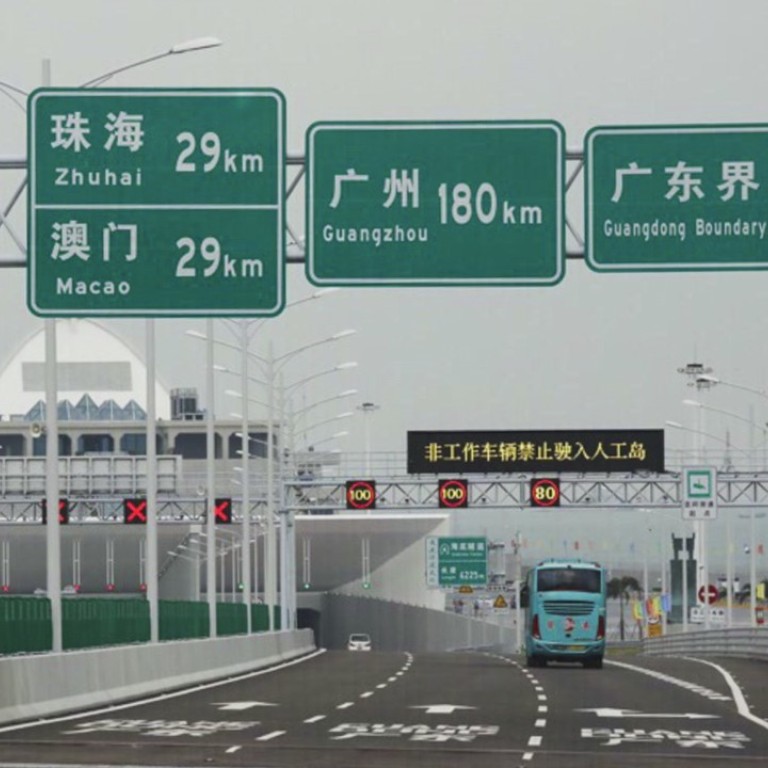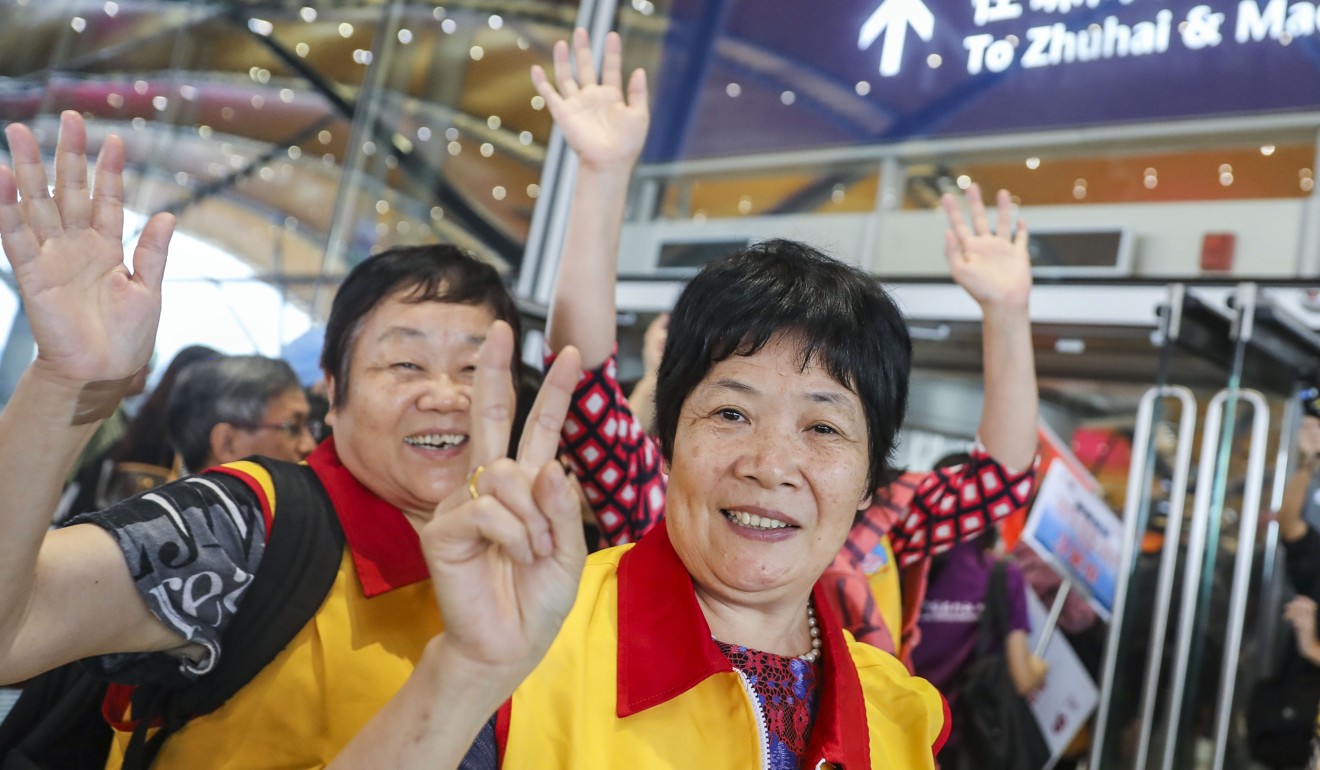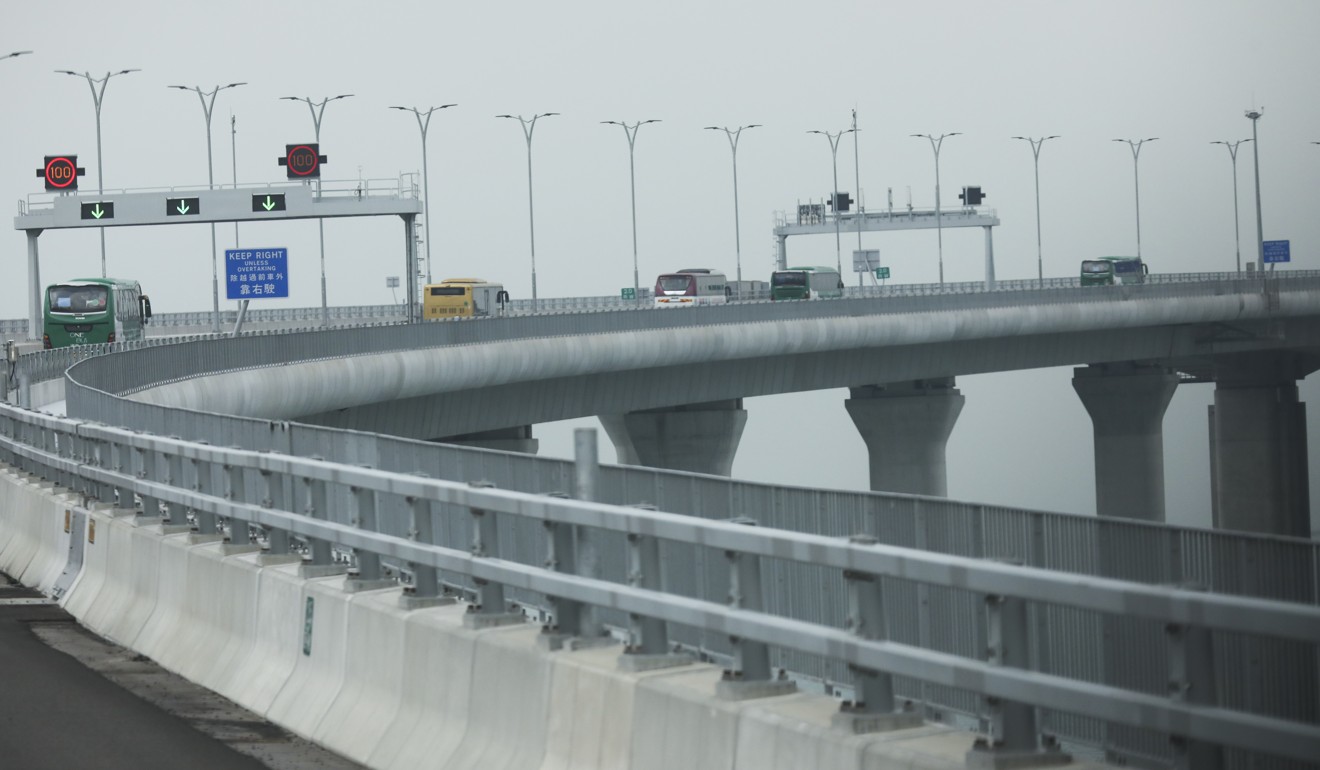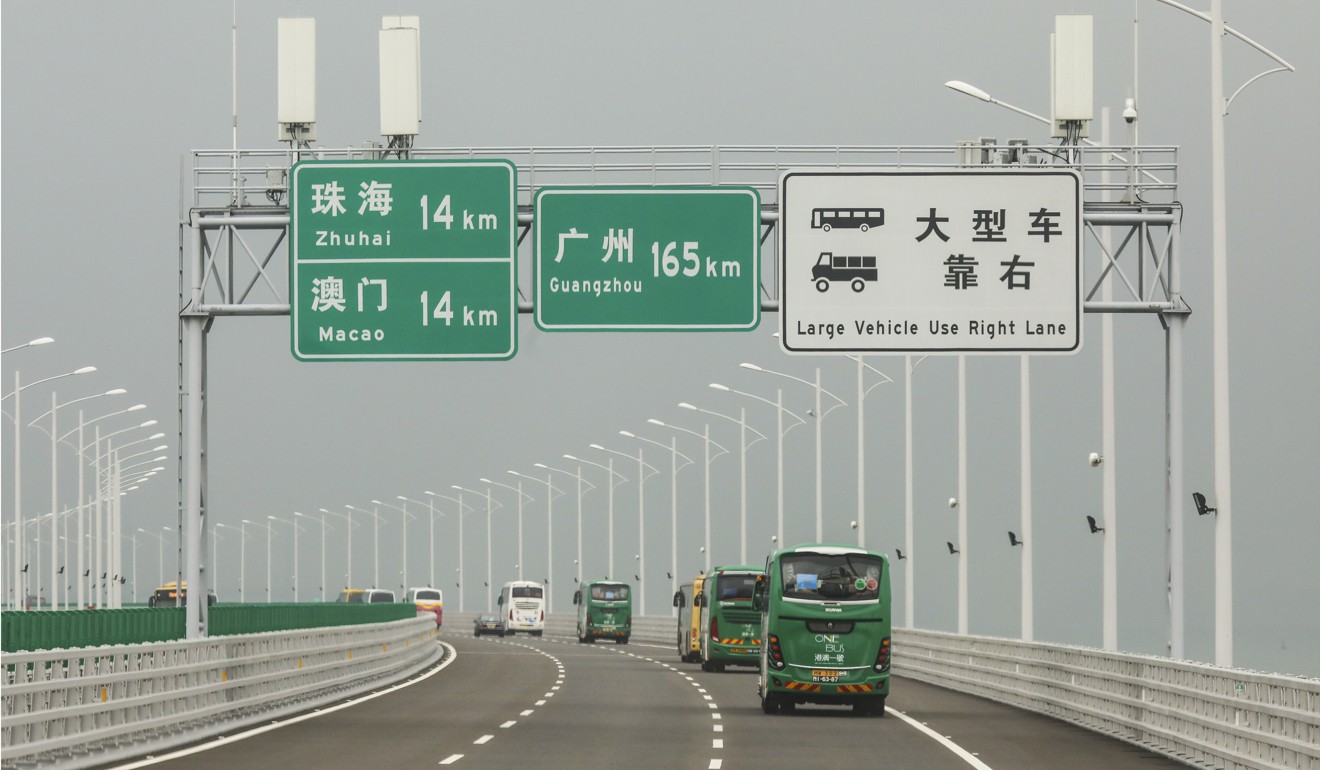
Hong Kong-Zhuhai-Macau Bridge passes first real test as it opens to Pearl River Delta traffic
- Excited passengers on cross-border coaches take selfies at the immigration clearance building
- Hong Kong’s transport secretary says he is not expecting large volume of traffic on first day of service
The newly opened mega bridge linking Hong Kong with Zhuhai and Macau passed it first real test on Wednesday as hundreds of vehicles began plying the 55km crossing which puts the three cities within an hour’s drive of one another.

From 9am until 10 pm on Wednesday, the bridge authority recorded a total of 2,305 vehicular trips, of which 1,340 were bound for Zhuhai or Macau while 965 were for Hong Kong. Among the vehicles, 1,154 were private cars, 1,120 were shuttle buses or cross-border coaches and 31 were goods vehicles.
The Immigration Department said 9,994 people had entered the city through the port facility on the Hong Kong side, while 12,950 had left, as of 4pm.
China tests facial recognition at Hong Kong-Zhuhai-Macau Bridge
Stanley Chiang Chi-wai, chairman of the Lok Ma Chau China-Hong Kong Freight Association, said it would be difficult to estimate how many of Hong Kong’s 13,000 cross-border lorries would use the bridge in the days and weeks to come.
“It could be a third cheaper to move cargo on the bridge, about HK$4,000 per trip,” Chiang said, noting this could be a competitive option or cheaper than shipping services.
But he pointed out the most common destinations for cross-border truckers were cities north and northeast of Hong Kong, such as Dongguan or Huizhou. With the added uncertainty of the US-China trade war, he said, it was too early to estimate how many trucks would use the bridge.
And, much like the bus operators, Chiang’s company was also caught up in the uncertainty preceding the opening of the bridge, which was only announced in the final week.
“The announcement was so sudden, we couldn’t arrange anything in advance,” he said.
Mega bridge blamed for worker deaths and drop in dolphin numbers
Chan Fu-chuen, vice-chairman of the Chamber of Hong Kong Logistics Industry, said his company had more than 10 cross-border trucks but none would use the bridge on its opening day.
“Many operators are still trying to figure out how to clear customs procedures,” he said.
Hung Wing-tat, of the Hong Kong Society for Transportation Studies, was optimistic the bridge would be popular among drivers and travellers in the long run.

“In the coming month, it will not reach the government’s original estimation of 9,000 to 14,000 vehicles using it each day. I think the main goal of the first month is to test the operation of the bridge,” Hung said.
How you can use the Hong Kong-Zhuhai-Macau mega bridge
Transport minister Chan, who inspected the immigration and customs facilities on the Hong Kong side, said: “In the initial period … passenger and traffic flow will be relatively low. It will take time to build.
“We will keep a close watch on the situation and try to mobilise more resources in enabling our handling capacity and performance so as to give all Hong Kong citizens and passengers a pleasant travelling experience.”

Chan noted the excitement among the first groups of travellers boarding buses in the morning.
Selfie takers were everywhere, and those waiting in the departure hall marvelled at the architecture of the new building, with its roof design imitating undulating waves to match the surrounding sea.
“It’s beautiful,” said retiree Ricky Fung Kwan-wah, 66, who had joined a one-day tour to Macau and Zhuhai.
Across the water at the Macau immigration facilities, operations were also smooth, but officers blew whistles to stop travellers from taking pictures.
Amy Wong, 58, was disappointed. “I took out my phone, but they didn’t allow me to take photos,” the housewife said, pointing out that she had been able to do so at the Hong Kong port area earlier.
The last-minute announcement of the bridge opening left bus operators rushing to finalise preparations.
Chan Man-keung, a spokesman for One Bus Hong Kong Macau, which runs a fleet of 19 coaches between Kwun Tong and the gambling hub, said the company could do a trial run only on Wednesday itself.

“We had a computer glitch when we tried to adjust the date for ticket sales. Now we can formally operate our service only from October 25,” he said.
The first coaches from Kwun Tong to Macau arrived at their destination at about 11.40am.
Retiree Wong Chor-sheung, 75, had a comfortable journey. “But I walked a lot for border clearance, and that was very tiring,” she said.
Xi hails new mega bridge as showpiece of innovation and integration
Supporters of the mega project say the new crossing will create opportunities and benefits under the “Greater Bay Area”, President Xi’s national scheme to develop 11 southern Chinese cities into an integrated economic and business hub.
Construction on the Hong Kong section of the bridge started in 2011, and it was originally expected to open in 2016. But it was plagued by problems such as workplace accidents, a corruption investigation, technical obstacles and budget overruns.
Hong Kong’s bill for the project snowballed to HK$120 billion (US$15.4 billion).



